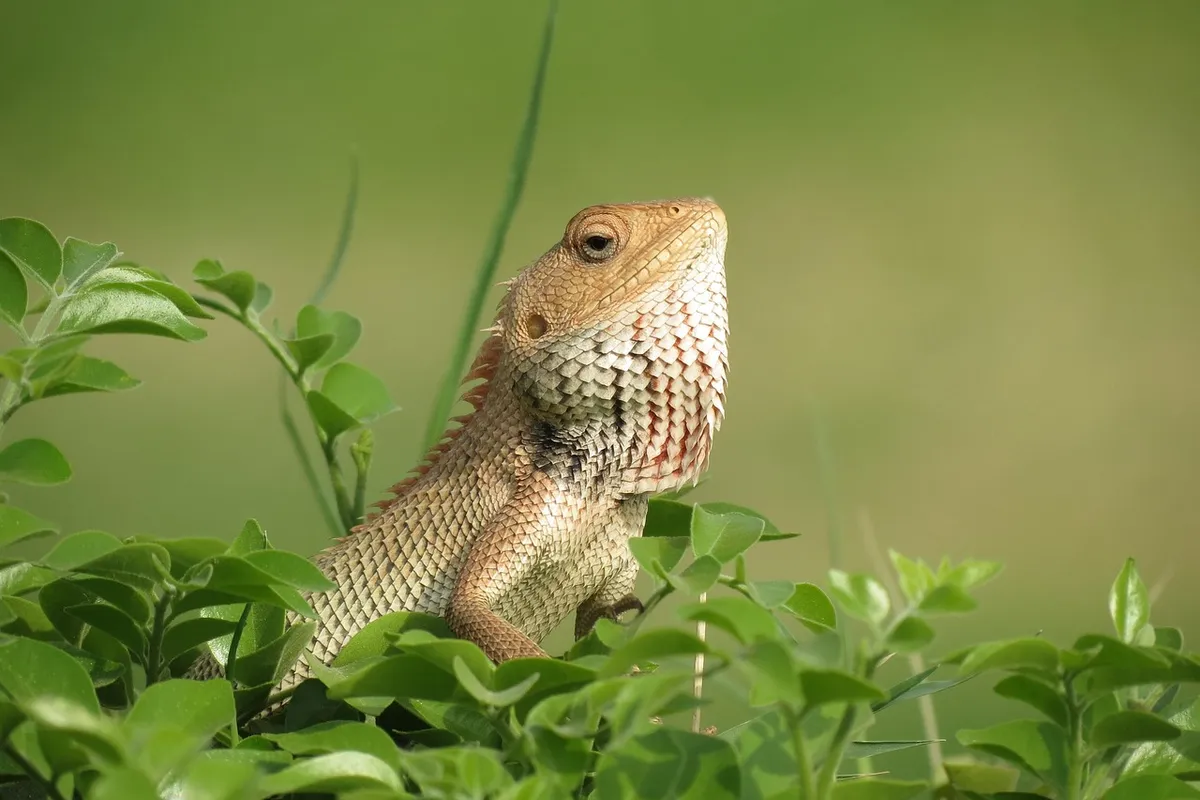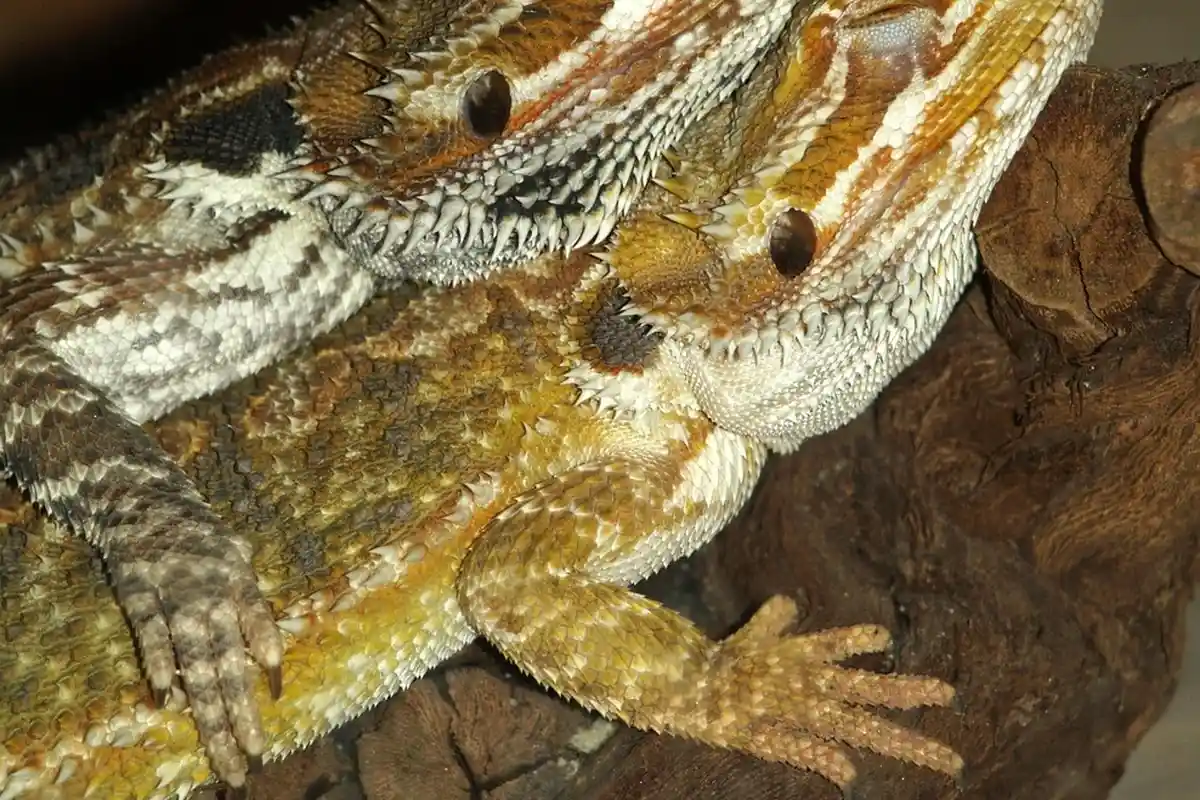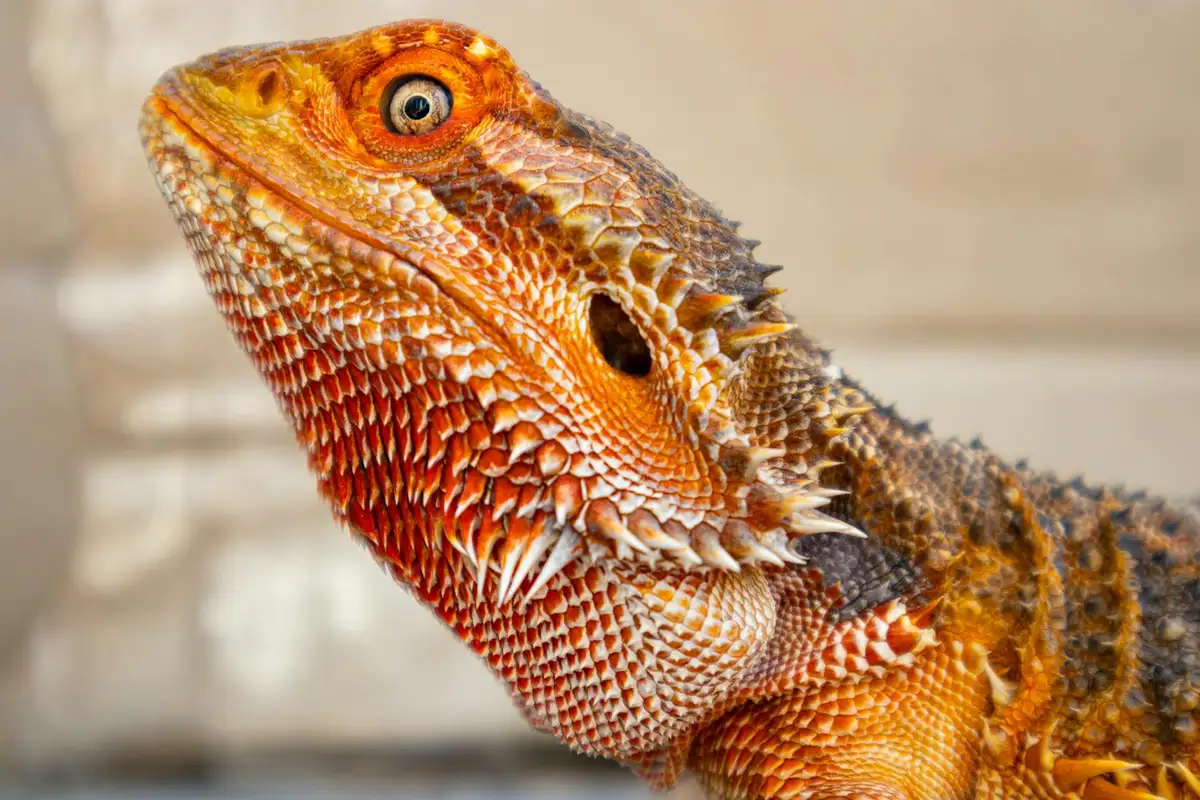Bearded Dragon Species and Morph Identification Guide
Published on: November 14, 2025 | Last Updated: November 14, 2025
Written By: Beardie Joe
Have you ever wondered exactly what kind of bearded dragon is staring back at you from its terrarium?
I’ve spent years caring for my own group of beardies, and I’m here to help you spot the differences with a reptile keeper’s eye.
This guide will walk you through the main species, break down common morphs and their traits, and show you how to identify your dragon like a pro.
Introduction to Bearded Dragon Species
Before we get into the rainbow of colors, let’s talk about the main players. The term “bearded dragon” actually covers several distinct species within the Pogona genus. Knowing which species you have is the first step to understanding its specific needs and potential size. Beyond species, the next layer is sex: males and females can differ in size, temperament, and care needs. This awareness helps you tailor housing, feeding, and handling to your dragon’s gender.
Pogona vitticeps – The Central Bearded Dragon
This is the rockstar of the pet world, the one you’ll see in almost every pet store and reptile show. I’ve raised dozens of these characters, and their personalities are just unbeatable. Central Bearded Dragons are typically robust, growing to a hearty 18 to 24 inches from nose to tail tip. They have a classic, triangular head, a spiky “beard” that puffs out dramatically when threatened, and rows of spiky scales along their sides. Their hardy nature and tolerant disposition make them the perfect choice for both first-time and experienced reptile keepers. Bearded dragons follow a distinct size growth pattern: rapid growth during their first year, then a gradual taper as they approach adult size. Providing steady nutrition, proper UVB lighting, and regular vet checks helps support healthy growth and predictable size development.
Other Pogona Species
While the Central is the most common, a few other species sometimes find their way into specialized collections. Here’s a quick look at the others you might encounter.
- Pogona barbata (Eastern Bearded Dragon): Larger and generally darker than the Central, with a beard that is often blacker and extends further up the head. They are native to the eastern parts of Australia and can be more skittish.
- Pogona henrylawsoni (Rankin’s Dragon): Think of these as the compact version. They max out around 12 inches, with a smaller head and a much gentler, more rounded appearance. I find their smaller size and calm demeanor ideal for keepers with limited space.
- Pogona minor (Dwarf Bearded Dragon): As the name suggests, this species is smaller. They are less common in the pet trade and have a more varied appearance across their different subspecies.
What Are Bearded Dragon Morphs?
This is where the real fun begins. A “species” is a biological classification, while a “morph” is a genetic variation *within* a species, primarily in color, pattern, or scale type. Think of it like different breeds of dogs—they’re all dogs, but they look vastly different. Selective breeding by dedicated hobbyists has created an incredible array of bearded dragon morphs that go far beyond their natural wild colors. When you keep multiple bearded dragons, cohabitation risks for bearded dragons brings its own realities and risks, including territorial aggression, stress, and uneven access to basking and food. Understanding these risks is essential for responsible care.
Color Morphs
These dragons are bred for their stunning and often vibrant base colors. The intensity can range from subtle hints to blazing, solid shades.
Red and Orange Morphs
These fiery morphs are real show-stoppers. The color can appear anywhere from a deep, rusty brick red to a vibrant, almost neon tangerine. I’ve noticed that their color can sometimes intensify when they are warm and basking. Red and orange morphs often command higher prices, with the most saturated individuals being the most sought after.
Yellow and Caramel Morphs
For a sunnier look, yellow and caramel morphs are gorgeous. Yellows can be a pale, pastel lemon or a rich, buttery gold. Caramels have a warmer, brownish-yellow tone, often with beautiful pattern detailing. These lighter-colored dragons can sometimes show their “stress marks” more visibly, which is completely normal and not a cause for alarm.
Pattern and Scale Morphs
Beyond just color, morphs can also alter the classic patterns and even the physical texture of the dragon’s scales.
- Leopard: Features fewer, larger dark spots instead of the usual neat, symmetrical patterning.
- Pinstripe: Has a clean, unbroken white or light-colored stripe running down each side of its back, creating a very streamlined look.
- Harlequin: A mix of the classic pattern with more irregular, blotchy markings, often combined with vibrant color.
Leatherback and Translucent Morphs
These are textural and visual game-changers. A Leatherback morph has scales that are dramatically reduced in size, giving their skin a smoother, almost soft appearance. Running your finger over a Leatherback’s back feels remarkably different from a standard-scaled dragon. Translucent morphs have see-through scales and often solid black eyes, which can give them a unique, almost ethereal look, especially as hatchlings. Their belly can even appear slightly blue because you can see through the skin.
Step-by-Step Morph Identification Guide

Step 1: Examine Base Color and Patterns
Start by observing your bearded dragon in natural or bright, indirect light to get the truest view of their colors. This will help you distinguish their natural hues from any colors of bell peppers or other food items you feed them.
Look for the dominant base color first-this is the overall hue that covers most of their body.
Common base colors include sandy tan, golden yellow, fiery orange, or even deep red, and these can change slightly with their mood or temperature.
Next, scan for patterns like stripes, bands, or spots. Here’s a quick checklist:
- Check the back for dorsal stripes or a seamless, patternless look.
- Look at the sides for vertical bars or mottled markings.
- Note any unique markings on the head, legs, or tail that stand out.
In my own dragons, I’ve found that jotting down notes or taking photos in different lighting helps track these details over time.
Step 2: Check for Scale Variations
Gently run your finger along your dragon’s back and sides to feel the texture of their scales.
Leatherback morphs have smaller, smoother scales that make their skin feel almost soft, with fewer spikey projections.
Translucent scales appear slightly see-through, especially around the belly and tail, and often come with dark eyes that look blue or black in certain light.
Normal scales are the classic, larger, and more pronounced spikes you typically see.
I always remind owners to handle their dragons calmly during this step to avoid stress-it’s about observation, not pressure.
Step 3: Identify Genetic Traits
Now, focus on inheritable features that hint at specific genetics.
For hypo (hypomelanistic) traits, lift a paw and check the nails-clear nails with no black lines are a dead giveaway.
Super hypo dragons take it further with zero black pigment anywhere on their body, giving them a clean, bright appearance.
Watch for other traits like witblits (patternless) or zeros (completely white or silver), which are rarer but stunning.
From my experience breeding dragons, I’ve learned that these genetic signs can pop up in unexpected ways, so patience is key. For bearded dragons, understanding the pregnancy egg laying timeline helps explain when these signs may appear and how to plan care.
Common Bearded Dragon Morphs Explained
Hypo and Super Hypo Morphs
Hypo morphs have reduced black pigment, which means you’ll see softer colors and those clear nails I mentioned earlier.
Super hypos are like the hypo’s brighter cousin, with no black marks at all, making their colors pop vividly.
Care notes: These dragons don’t need special treatment, but their lighter skin can be more sensitive to UVB-I always use a high-quality bulb and provide shady spots in their enclosure.
They’re generally hardy, but keep an eye on their shedding, as reduced pigment doesn’t affect their overall health.
Leopard and Pinstripe Morphs
Leopard morphs are easy to spot with their scattered, dark spots across a lighter background, resembling a big cat’s coat.
Pinstripes have thin, defined lines running down their back, often with minimal side patterning.
Recognizing them is all about the pattern consistency-leopards keep their spots through life, while pinstripes maintain those clean lines.
In my care, I’ve noticed these morphs are active and love climbing, so include branches and rocks for enrichment.
No extra health worries here, just ensure a balanced diet with plenty of veggies and insects.
Translucent and Pied Morphs
Translucent dragons have a unique, slightly transparent skin that can make their internal structures faintly visible, paired with dark blue or black eyes. Bearded dragons, for example, have pleurodont teeth anchored to the inner jaw that are continually replaced. This dental setup supports their omnivorous diet and tough feeding, as detailed in their dental anatomy.
Pied morphs show patchy, irregular color blocks, often with large white or light areas mixed with darker hues.
Translucent beardies might have vision issues due to their eye color, so I recommend avoiding overly bright lights and monitoring their behavior closely.
Pieds are usually robust, but their varied coloring doesn’t impact care-just stick to standard husbandry with proper heat and hydration.
I’ve cared for translucents that needed extra attention during shedding, so gentle misting helps keep their skin healthy.
Care Considerations for Different Morphs

While all bearded dragons share core care needs, their specific genetics can sometimes demand small but important tweaks to their habitat and husbandry. I’ve found that tailoring your setup to your dragon’s morph is one of the most proactive things you can do for their long-term health. It’s essential to ensure you meet all bearded dragon care requirements regardless of the morph.
Morphs with Special Needs
Some of the most stunning dragons need a little extra TLC. I always advise new owners to be fully aware of these needs before falling in love with a particular look.
- Translucent Morphs: Their unique, slightly see-through skin is beautiful but more sensitive. I use a lower-wattage basking bulb for my translucent, Steve, and monitor the temperature constantly to prevent overheating. They can also have vision issues, so shallow food dishes help them find their meals.
- Silkback Morphs: These dragons completely lack the protective scales of a standard beardie. Their skin is incredibly delicate and prone to scratches and burns. You must provide a habitat with absolutely no rough surfaces and be extremely careful with handling. They often need regular, vet-approved moisturizing treatments to keep their skin healthy.
- Leatherback Morphs: With reduced scaling, they are hardier than silkbacks but still more sensitive than normals. Watch for any abrasions from rough decor and ensure their UVB lighting is perfectly placed, as their skin may transmit light differently.
- Hypomelanistic Morphs: These “Hypo” dragons have less dark pigment. I’ve noticed my hypo, Ember, seems to be a bit more sensitive to very intense, direct light, so providing plenty of shaded areas in her enclosure is key.
Choosing a Morph for Beginners
If you’re just starting your bearded dragon journey, your best bet is to choose a morph known for its hardiness and straightforward care. As you set up your routine, consider how often to feed. A complete feeding guide can help you decide if daily meals are right for your dragon.
- Best Beginner Morphs:
- Classic/Wild Type: The original, most robust dragon. Their genetics are strong, and they are generally less prone to congenital issues.
- Hypomelanistic (Hypo): A great step into the world of morphs. They are beautiful, often vibrant, and don’t typically come with the specialized needs of more extreme morphs.
- German Giant (if from a reputable source): Known for their large size and typically calm demeanor.
- Morphs to Avoid as a New Owner:
- Silkbacks: Their high-maintenance skin care is a big responsibility and can lead to expensive vet bills.
- Translucents: Due to their potential for vision and sensitivity issues, I recommend you gain some standard beardie experience first.
- Any “Designer” Morph from an Unverified Source: Fancy, expensive combinations can sometimes come from poor breeding practices aimed only at looks, not health.
Finding and Selecting Your Bearded Dragon

Where you get your dragon sets the stage for your entire experience together. Taking the time to find a healthy animal from an ethical source is the single most important decision you will make. Once your bearded dragon is home, knowing what to feed is essential. A complete guide on safe foods for bearded dragons helps you provide balanced meals and avoid risky choices.
Reputable Breeders vs. Pet Stores
You generally have two main avenues, and they offer very different experiences.
- Reputable Breeders:
- You get detailed lineage and genetic history.
- The dragons are typically well-socialized from birth.
- You can often see the parent dragons and their living conditions.
- The breeder will be a wealth of knowledge and offer lifelong support for your dragon’s care.
- This is the best, and often only, way to find specific, high-quality morphs.
- Pet Stores:
- Convenient and sometimes less expensive upfront.
- However, you rarely know the dragon’s history or age.
- They can be sourced from large-scale reptile mills where welfare isn’t the priority.
- I’ve seen too many pet store dragons come home with hidden parasites or other health issues.
What to Look For
Whether at a breeder’s home or a store, your eagle eye is your best tool. Here’s a quick health and wellness checklist.
- Clear, Bright Eyes: No swelling, crust, or difficulty opening.
- Alert and Curious Behavior: They should be aware of their surroundings. A dragon that is lethargic or doesn’t react to movement can be ill.
- Full, Round Body: Look for a plump tail and belly, not a skinny or bony frame.
- Clean Vent: The area should be free of any stuck substrate or feces.
- Clear Skin and Scales: Check for any mites, wounds, or patches of stuck shed.
- Ask Questions: A good breeder will welcome them. Always ask about their guarantee policy, what the dragon has been eating, and if they’ve had a fecal check for parasites.
Frequently Asked Questions
How much do bearded dragon morphs typically cost?
Prices vary widely based on rarity and genetics, ranging from around $50 for common morphs like wild types to over $1000 for rare designer morphs with intense colors or unique patterns.
Are there true black bearded dragon morphs?
True genetically black morphs are very rare and often result from selective breeding for dark pigmentation, but most black appearances are temporary due to stress, temperature changes, or other morph traits like dark phases in certain lines.
Where can I find specific bearded dragon morphs for sale?
Specialized reptile breeders, online marketplaces, and reptile expos are the best sources for specific morphs, as they offer detailed genetic histories and health guarantees, unlike general pet stores that may lack variety and background information.
Final Thoughts
Getting to know the different species and morphs is one of the most rewarding parts of bearded dragon care. Remember, the classic Central Bearded Dragon is your most common and hardy beginner-friendly pet, while morphs like Leatherbacks and Translucents offer unique looks with their own specific care considerations. The morph affects their appearance and sometimes their skin texture, but it doesn’t change their fundamental, lovable personality. If you’re ever unsure about your dragon’s weight, a bearded dragon overweight underweight visual guide can be a helpful reference. It complements the care tips above by giving you quick cues for weight-related health checks.
My best advice is to always prioritize health over color or rarity. Choose a vibrant, alert dragon from a reputable source, whether it’s a standard wild-type or a stunning Witblits. In my experience, a healthy dragon you connect with will always be the most beautiful one. Happy dragon spotting!
Further Reading & Sources
- 22 Types of Bearded Dragon Morphs & Colors (With Pictures!)
- 11 Types of Bearded Dragon Morphs
- COLORS & MORPHS – 7thgalaxydragons
Bearded Dragon Lair is the ultimate resource for bearded dragon enthusiasts, offering expert advice and practical tips to ensure the health and happiness of your scaly companion. With years of experience in reptile care, we are dedicated to providing accurate, up-to-date information to support your bearded dragon journey.
Care for Specific Morphs
